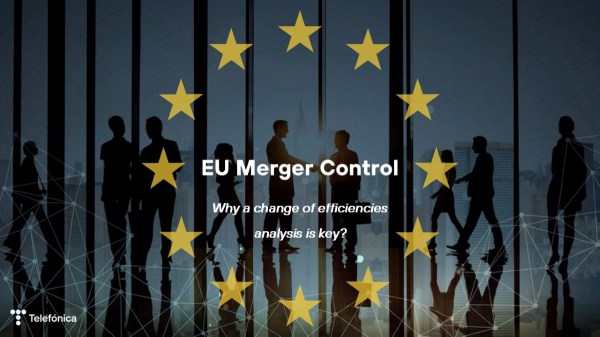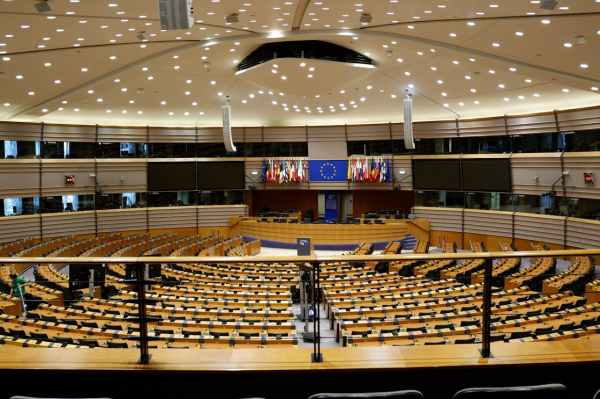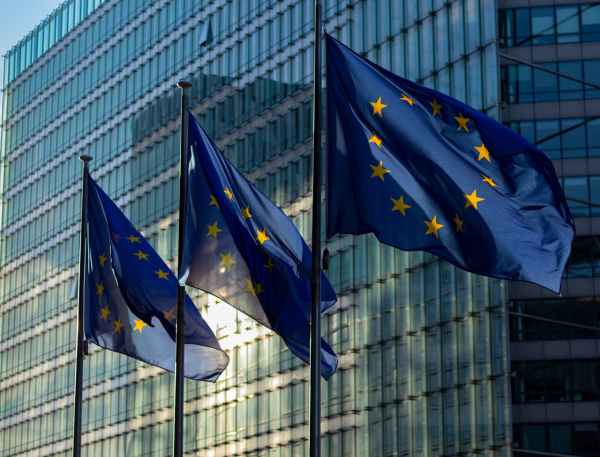In July, we started the series entitled EC White Paper, where we present Telefónica’s contribution to the public consultation on the White Paper. As a result of this consultation, the Commission will present a legislative proposal, the Digital Networks Act, which will determine the future of the European Union and the telecom sector in the next decade through a new regulatory framework.
Two weeks ago, Teresa Ribera was designated by President Von der Leyen as Executive Vice-President for Clean, Just and Competitive Transition, and Commissioner for Competition. If Ribera is finally appointed after the public hearings, she will be in charge of leading a new approach to competition policy, aimed at supporting companies scaling up in global markets and ensuring they have incentives to invest, innovate and grow – and most importantly, ensuring that DG COMP decisions are evidence-based, consider sectoral policies and meet EU resilience in face of geopolitical and other threats to supply chains and of unfair competition through subsidies.
Boosting European competitiveness and securing a European Union strong, resilient and sovereign of its own destiny, have been strongly advocated not only by the EU telecoms Industry, but also by other critical sectors that have seen undermined their ability to compete and to be sustainable, putting at odds the survival of their business model.
The Commission now embraces and wants to make these objectives its own, not only with Ribera´s mission letter, but also in the Mario Draghi’s report on The Future of European Competitiveness, where the former European Central Bank President underlines the need to increase productivity growth, which is the most important driver of growth and welfare improvement in the long run. Without productivity growth, Draghi considers it will be unfeasible for Europe to achieve its ambitions.
The telecoms sector is identified by Draghi as a key industry for driving productivity and economic growth. However, his report highlights that there are large imbalances in the number of operators in Europe compared to the US and China. In particular, he points out that current telecom regulation and competition policy have discouraged consolidation, favouring a multiplicity of smaller players in each market. The report notes that the declining profitability of the telecoms sector due to this fragmentation has not only held back investment in technological innovation, but also poses a risk for industrial companies in Europe, in a phase when state of the art infrastructure is required to digitise manufacturing, supply and distribution, and to develop key technologies such as IoT or AI. And it suggests measures for “a new approach to competition policy supporting a new Industrial Deal”.
Indeed, the US invests more than Europe per subscriber (per capita): Europe (€109/year) lags clearly behind the US (€240/year). EU telecom operators allocate a higher proportion of revenues to investment, which is becoming unsustainable given the declining trend in revenues, return on investments and increasing investment needs to meet connectivity targets, harming both consumer and producer welfare. This is impacting EU telecom operators´ investment capabilities, in terms of investment per capita, and this gap shows no signs of narrowing.
To revert this trend, Draghi recommends facilitating consolidation in the telecom sector. The main initiative is to change the EU’s stance on the scale and consolidation of operators to achieve a true Single Market, without compromising consumer welfare and quality of service.
Draghi´s recommendations echo what Letta states in its report, where he underlines that “The European Union needs to let network operators expand by buying national rivals to help build a real single market”. And continues: “The scale of investments necessary in new technologies (for example edge/cloud, 6G, AI) implies that due consideration should be given to the necessity of some level of consolidation within national markets”.
But why in-market consolidation is needed to gain scale and fill the gap in network investment?
There is a strong belief in the Commission that the way for EU telecom operators to gain scale and overcome the investment gap in network roll-out is with the creation of a new model of pan-European operators capable of providing services across European markets. Nonetheless, the Commission is missing that the scale required by telecoms operators should happen at the local level, where the largest investment is required for the access network and the economies of scale and synergies are maximized.
EU telecoms operators can only cope with these high investment needs if there is sufficient return on the investments – this can only be achieved if there is enough scale in the form of additional customers on individual networks.
Therefore, scale is urgent and critical to encourage investment in EU telecoms markets. Facilitating in-market consolidation is key for EU telecom operators to achieve the scale they need to ensure its viability. In addition, in-market scale would allow local efficiencies through synergies (e.g., efficient non-duplicated investments, optimized use of assets, spectrum, and sites efficiencies; faster rollout of networks, and other out-of-market efficiencies like green footprint). On top of that, streamlining and simplifying and harmonizing regulation towards a more integrated Single Market, would also save costs in terms of administrative burdens, supply chain or regulatory costs and increase the efficiency and speed of infrastructure deployment.
In-market scale will deliver great benefits to consumer welfare, as would foster sustainable network players able to invest in the most advanced, secure, and resilient networks. As a result, high quality networks will deliver digital experiences and services better adapted to the preferences of EU consumers and businesses, increasing the value, choice, and innovation without necessarily driving up prices.
Will the reform of the Horizontal Merger Control Guidelines be enough to ensure that DG COMP´s decisions meet EU wider objectives?
Europe needs a new approach to competition policy – one that is more supportive of companies scaling up in global markets, allows European businesses and consumers to reap the benefits of effective competition (…)
In the Mission Letter sent by Ursula Von der Leyen to Teresa Ribera, the President of the European Commission stresses the need to review the approach of European competition policy to enhance competitiveness and welfare.
One of the main priorities for new Commissioner Ribera will be the review of the Horizontal Merger Control Guidelines (the Guidelines) as one of the key elements in the proposed reform of competition policy to ensure that DG COMP merger decisions encourage investment in certain strategic sectors, in appropriate time horizons.
We welcome this shift of approach of the Commission and its willingness to reform the rules that govern EU merger decisions, hoping that this review comply with the mission of the new Commissioner of ensuring that businesses have enough incentives to invest, innovate and grow. However, we also wonder if the review of the Guidelines would be enough to make this thorough change the Commission aims to pursue.
We should not forget that the Guidelines are soft law, a self-guidance for the Commission usually based on Case Law and previous decisions taken by the Authority to give certain insight to companies on how the Commission is expected to review EU mergers. Taking into account that Von der Leyen´s mandate encourages DG COMP to look at new parameters and wider policy objectives that had never been considered in the past in DG COMP´s decisions, the review of Guidelines should be prospective or would be insufficient to some of the changes they are meant to cover.
EU Merger Regulation as the basis of EU Merger Control
For this reason, we genuinely believe the review of the EU Merger Regulation (the EUMR) would ensure such a fundamental change of approach in which competition policy should become a tool to secure Europe´s competitiveness, resiliency, strategic autonomy, as other parameters of consumer welfare in the complex current geopolitical environment. The review of the EUMR, which has not been reviewed in the past 20 years, is key to give response to new market realities and challenges.
Moreover, with the recent ECJ judgement on the Illumina/Grail case whereby the Commission must stop requesting referrals from National Competition Authorities over cases that do not meet neither EU nor national thresholds under Art. 22 EUMR. Therefore, if the Commission wants to cover the enforcement gap identified with regards killer acquisitions, the EUMR’s thresholds should be reviewed to ensure Commission’s jurisdiction over that kind of mergers.
The review of the EUMR should encompass the need for the Commission to take a forward-looking and long-term approach in the assessment of EU mergers, with focus on long-term investment strategies that foster EU competitiveness and economic security and put less weight on short-term price effects as the sole indicator of market competitiveness and consumer welfare. This is something that Draghi’s report also recommends. Now it is key that DG COMP stops reviewing merger decisions in silos and takes a broader picture to ensure that its decisions meet EU wider policies to achieve a true Digital Single and Competitive Market.
Other factors such as innovation, sovereignty, resilience, security, sustainability, and consumer choice should be widely considered as out-of-the market efficiencies that go beyond to mere economic framework but contribute to broader benefits to citizens and businesses.
Finally, as stated in the Commissioner’s mission letter, we strongly believe in working closely with other Commissioners and services, so that other DGs and Cabinets are more involved in the decision-making process of DG COMP ‘s merger decisions, as it also seems to be the mandate of President Von Der Leyen to the new Competition Commissionaire. This is paramount regarding other DGs within the Commission that have expertise in the sector in which the merging parties are active, or that have specific wider EU objectives.
In the next post we will delve deeper into how to promote a fair contribution.










